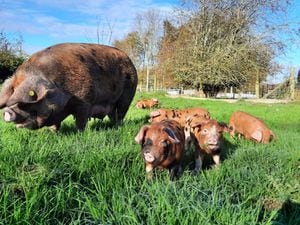Consider all angles when it comes to planning applications
If the thought of developing redundant agricultural buildings following recent changes to the planning law seems attractive, it may be wise to consider a wider strategic approach before taking action.
In a bid to boost housing supply in the countryside, in April the Government altered the Class Q permitted development legislation which permits the conversion of agricultural building into houses without the need for planning permission.
It is now feasible to create up to three larger homes with a maximum combined floorspace of 465sq m, or up to five smaller dwellings, each having a maximum floorspace of 100sq m. A mix of both is also possible, providing that no more than five houses are created. Three of these may be larger homes exceeding 100sq m.
Due to some confusion over interpretation of the changes by individual councils, the Government has clarified various matters to encourage more conversions. As a result, it is necessary for the building to be capable of functioning as a dwelling, but councils cannot consider internal works. While very insubstantial or ramshackle buildings are unlikely to be considered suitable, anything which is in a reasonable condition with a fair degree of enclosure is potentially acceptable and can include both older and more modern buildings.
There are a number of conditions, particularly the need to submit an application for ‘prior approval’ to the council, so that they can assess certain impacts.
In addition to residential conversions, there are class R rights to convert buildings to a ‘flexible’ commercial use, such as shops, restaurants, hotels, offices, storage and distribution depots or entertainment centres. Again, there are conditions and limitations. It may also be possible to use both class Q and R rights to create a larger mixed-use site.
Another potential opportunity comes with the change in the size of new agricultural buildings allowable through permitted development rights; for larger farms this has increased from 465sq m to 1,000sq m.
While all this may sound attractive, opportunities come with pros and cons attached.
It may be important to consider succession planning as part of any scheme. For instance, a farmer with a son or daughter coming into the business may want to provide accommodation for him or her. In this instance, it may be strategic to consider applying for a house with an agricultural tie and get this resolved before developing redundant barns, to maximise development opportunity on the holding.
It is also important to remember that whether or not a proposal is acceptable depends on whether it can be described as a 'conversion’ or whether it is really a rebuild. As this is something of a grey area, professional advice may be necessary to enable a clear picture of hopes of success.
Gill Broad, Fisher German LLP





